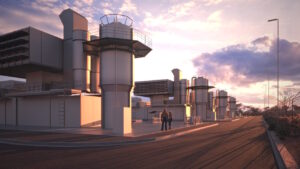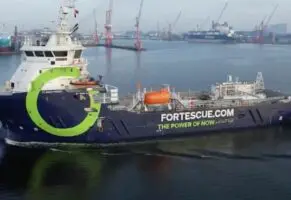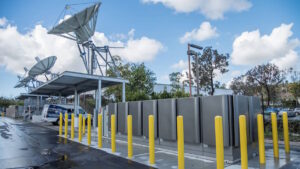South Australia’s experiment with blending five per cent hydrogen into its household gas network in Adelaide is a “waste of precious renewable energy,” a visiting expert has said.
Cambridge Professor, and co-founder of the Hydrogen Science Coalition, David Cebon, says using expensive green hydrogen for domestic use will prolong Australia’s dependency on gas instead of speeding up the transition to renewable energy.
“Hydrogen is not just expensive, it is also unable to be pumped into the gas network at any more than about 20 per cent, meaning that it prolongs household dependency on a fossil fuel,” he says.
“Studies also show that injecting 20 per cent of hydrogen into existing gas pipelines will only save around 7 per cent of carbon emissions.”
Green hydrogen is made using electricity, a process that is extremely energy hungry. Many experts believe its application will be reserved for ammonia, some hard to abate industries, and niche uses, but the gas industry is keen to absorb and include hydrogen to protect their investments in networks of gas pipelines.
Others, including Cebon, suggest it would be a lot cheaper to support households to electrify their homes for heating, cooking and cooling rather than adding the extra step of making hydrogen.
“Those solar panels currently being used to produce hydrogen for homes in Mitchell Park would provide far more energy if they were simply providing electricity,” Cebon says.
“Green hydrogen will be essential for industrial processes like fertiliser, for which there are no clean alternatives, and steelmaking.
“It is a scarce and precious resource. We shouldn’t be wasting it on things like hot water and cooking, when we can use cheap and abundant renewable energy for this.”
He says green hydrogen should be saved for high value applications where there are no alternatives, such as fertiliser, or for shipping and aviation where electrification is likely to be impossible.
Not an emissions solution
The former Victorian told RenewEconomy that because hydrogen has a lower energy density than natural gas, a 5 per cent blend means the operator Australian Gas Networks (AGN) must use 3 per cent more gas to get the same amount to customers while at the same time using more electricity to it through the network.
“The upshot is you only save about 2 per cent of carbon emissions by doing that,” he says.
“You could just adjust your existing hot water heater to be more efficient and get more than 2 per cent better improvement at no cost with no expensive hydrogen.
“It’s a completely false economy. That hydrogen, which is extremely expensive to make, will add at least 4 per cent cost to the gas that you buy and will only reduce carbon emissions by 2 per cent.”
AGN has been sending a 5 per cent green hydrogen blend from the Hydrogen Park South Australia (HyP SA) to 700 nearby homes since May 2021, and will widen that to 3000 more homes this year.
It is aiming for 10 per cent green hydrogen and biomethane across its South Australian network by 2030, and a complete phase out of fossil gas by 2040.
Can’t do it without spending a lot on infrastructure
Goals like a complete decarbonisation of gas using green hydrogen are not economically possible in all locations, however.
Cebon says a “modest” blend such as 5 per cent won’t damage gas infrastructure, but anything higher requires a serious overhaul of all components of a network.
But higher blends cause embrittlement to steel pipes and fittings. Networks such as that in Tasmania use HDPE plastic pipes and fittings, which allows for higher blends. But in Victoria major upgrades would be required.
To date, Victoria’s gas network owner APA has been unable to estimate the scope, cost or timeline for what would be required to support hydrogen blends in their assets – or confirm whether it might be possible at all — because of the scale of the upgrades it suspects will be required.
Cebon says the lower energy density of hydrogen means more gas must be pumped, which requires more electricity.
Blends of more than 20 per cent require a complete replacement of pumps, compressor stations and all pipe infrastructure, as the whole system would need to be upsized to deliver the same amount of energy.
In NSW, last year’s Environmental Impact Statement for the proposed new gas generator at Kurri Kurri found that building the high-pressure storage to be compatible with a 30 per cent hydrogen blend would be uneconomic.
At a time when household gas use is falling, as Australians transition to electricity, questions should be asked about the level of investment required to make green hydrogen work in ageing gas networks, wrote Brotherhood of St Laurence energy policy advocate Emma Chessell in RenewEconomy last week.
The Victorian government in May 2022 outlined a plan, which it delayed until after the November election, to phase gas out of residential networks, starting with an end to gas incentives from 2023 onwards.







